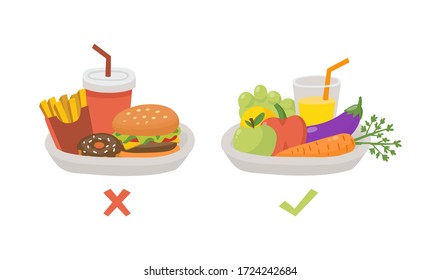
It can be difficult to digest certain foods during a flare up of colitis. People with ulcerative bowel disease may need to cut back on their intake potatoes because of the high level of glycoalkaloids. These substances can cause gas, bloating, or worsen the symptoms. Moreover, consuming fried potato chips or skins can also worsen symptoms. Also, foods high in sulfur are bad for the body. It can cause gastric problems, cramping, and diarrhea. Experts recommend that you reduce the amount of sulfites in your daily diet, as well as avoiding processed food.
If you are trying to avoid spicy foods, it is important to avoid them altogether. These foods contain capsaicin. This can cause irritation to the intestinal lining and flare up symptoms. This can cause colon damage, which can make it more difficult to keep remission. If you can tolerate ground flaxseeds you may be able to eat a low-FODMAP food plan. These diets can be difficult for some people. Your doctor should be consulted before you start a low-FODMAP lifestyle. to make sure that it's right for your particular case.
A low-fiber diet is best for colitis sufferers. Foods high in fiber are recommended for people who are in remission. People with Lupus should eat bananas. If you are not sure about what to eat with colitis flare up, talk to a doctor or dietitian about a simple elimination diet. Your goal is to identify what foods can trigger your colitis symptoms.

While it's not advised to avoid food that contains soluble or insoluble fibrous fiber, a healthy IBD diet will contain standard recommendations. You should also consider the specific nature of colitis. In other words, too much bread and pasta can cause diarrhea. You may be better off eliminating these types of foods during a flare up, or focusing on those that are easy to digest.
Limiting dairy products and wheat can be helpful for colitis symptoms. But, cutting out certain food groups is not a good option. Instead, you should focus on reducing the amount of food you consume. You can also incorporate a gluten free diet into your daily diet. Avoid dairy products and a gluten-free diet. If you are suffering from a colitis flare up, you should also consider limiting foods that contain high amounts of fiber.
Because people with UC may not have the ability to digest lactose properly, it is important that you limit your intake of dairy products. It's important that you stay hydrated throughout flare ups. While limiting dairy products, you can still consume Greek yogurt, which contains probiotics and is low in lactose. You should avoid drinking any type of milk, as it is high in saturated fats.
In general, you can eat a diet that is rich in fruits or vegetables. If you have UC, they are not recommended. They may cause an increase in inflammation. They can reduce symptoms of UC. These foods should be avoided if colitis flares up. You should avoid eating raw vegetables and eggs if you are suffering from diarrhea. You should avoid eating them if you have colitis.

Salmon can also be eaten. Salmon oil has been shown to help lower inflammation and is rich in protein. Tuna and other fish are also rich in omega-3 fatty acid. But fish is best cooked in a way that doesn't lose its nutritional value. It is important to eat more fish and increase your intake of calories and protein. This will prevent you from developing colitis again and help improve your overall health.
Reduce the amount of fiber in your diet. Several sources of fiber contain high amounts of magnesium and folate. These are the best foods to avoid if colitis flares up. Too much fiber can cause symptoms. Avoid processed foods, as well as products made from enriched white bread flour. They can cause the spread of the disease. You should avoid them if you wish to receive the most effective relief.
FAQ
What's the problem with BMI?
BMI stands for Body Mass Index. This is a measure of body fat that is calculated based on height or weight. The following formula can be used to calculate BMI.
Add weight in kilograms to height in meters squared.
The result is expressed as a number from 0 to 25. Scores between 0 and 25 indicate obesity. A score of 18.5 indicates overweight. A score of 23 indicates obesity.
A person who is 100kg and 1.75m tall will have a BMI 22.
These are the 7 secrets to a healthy life.
-
Be healthy
-
Exercise regularly
-
Good sleep
-
Make sure to drink plenty of water.
-
Get enough sleep
-
Be happy
-
Smile often
How much should I weigh for my height and age? BMI chart & calculator
Use a BMI calculator to determine how much weight is needed to lose. The range of a healthy BMI is between 18.5- 24.9. You should lose about 10 pounds each month if you are trying to lose weight. Enter your height and weight to calculate your BMI.
This BMI chart shows you if it is possible to identify if you are either overweight or obese.
What are 5 ways to live a healthy lifestyle?
Living a healthy lifestyle includes eating right, exercising regularly, getting enough sleep, managing stress, and having fun! Good eating habits include avoiding processed foods, sugar, unhealthy fats, and avoiding junk food. Exercise burns calories and strengthens the muscles. Sleeping well improves concentration and memory. Stress management is a way to reduce anxiety levels and depression. Fun is the key to keeping us healthy and happy.
What can be done to increase your immune system's effectiveness?
The human body is composed of trillions if not billions of cells. Each cell is responsible for creating organs and tissues with specific functions. One cell is replaced by another when it dies. The chemical signals known as hormones are used to communicate between cells. Hormones regulate all bodily processes, from growth and development to metabolism and immunity.
Hormones are chemical substances that glands secrete throughout the body. They circulate through the blood stream and act as messengers to regulate how our bodies function. Some hormones come from the body and others from outside.
Hormone production occurs when hormone-producing cells release their contents into your bloodstream. Once hormones are released they move through the bloodstream until they reach their intended organ. Sometimes hormones stay active for only a short time. Others hormones remain active longer and still have an influence on the body's functioning long after they leave bloodstream.
Some hormones may be produced in large numbers. Others are only produced in very small quantities.
Certain hormones can only be produced at specific times in life. The production of estrogen can occur during puberty and pregnancy, as well as menopause and old age. Estrogen helps women develop breasts, maintain bone density, and prevent osteoporosis. Estrogen promotes hair growth, and skin stays soft and smooth.
What does it take to make an antibiotic work?
Antibiotics are drugs which destroy harmful bacteria. To treat bacterial infections, antibiotics are used. There are many types and brands of antibiotics. Some can be taken orally, others are injected and some are applied topically.
People who have been infected with certain germs may need antibiotics. If someone has chicken pox, they might need to take an oral antibiotic in order to prevent shingles. Penicillin might also be administered to someone with strep throat. This will help prevent the possibility of developing pneumonia.
A doctor should give antibiotics to children. Children are more likely to experience side effects than adults from antibiotics.
The most common side effect of antibiotics is diarrhea. Other possible side effects include stomach cramps, nausea, vomiting, allergic reactions, headaches, dizziness, and rashes. These side effects usually disappear once treatment has ended.
Statistics
- According to the Physical Activity Guidelines for Americans, we should strive for at least 150 minutes of moderate intensity activity each week (54Trusted Source Smoking, harmful use of drugs, and alcohol abuse can all seriously negatively affect your health. (healthline.com)
- This article received 11 testimonials and 86% of readers who voted found it helpful, earning it our reader-approved status. (wikihow.com)
- WHO recommends reducing saturated fats to less than 10% of total energy intake; reducing trans-fats to less than 1% of total energy intake; and replacing both saturated fats and trans-fats to unsaturated fats. (who.int)
- Extra virgin olive oil may benefit heart health, as people who consume it have a lower risk for dying from heart attacks and strokes according to some evidence (57Trusted Source (healthline.com)
External Links
How To
What does the word "vitamin" mean?
Vitamins are organic compounds that can be found in foods. Vitamins are necessary for us to absorb nutrients in the foods we consume. Vitamins cannot be produced by the body. They must be acquired from food.
There are two types vitamins: water soluble or fat soluble. Water soluble vitamins dissolve easily in water. You can find vitamin C,B1 or thiamine, B2 or riboflavin and B3 or niacin, B3/niacin, B6/pyridoxine, folic Acid, biotin and pantothenic Acid as examples. The liver and fat soluble vitamins are stored within the liver and in fatty tissue. Some examples include vitamin D and E, K, A and beta carotene.
Vitamins are classified according to their biological activity. There are eight major vitamin groups:
-
A – Essential for normal growth, and the maintenance of good health.
-
C - important for proper nerve function and energy production.
-
D - Vital for healthy bones and teeth
-
E is needed for good reproduction and vision.
-
K – Required for healthy nerves & muscles.
-
P – vital for building strong bones.
-
Q - aids digestion and absorption of iron.
-
R - Required for red blood cell production
The recommended daily allowance of vitamins (RDA), varies according to age, gender, physical condition, and other factors. The U.S. Food and Drug Administration (FDA) sets the RDA values.
For adults 19 years and over, the RDA of vitamin A is 400mg per day. For fetal development, pregnant women need 600 mg per day. Children ages 1-8 require 900 micrograms per day. Children under 1 year old require 700 micrograms daily, while infants over one year old need 500 micrograms every day. This decreases between 9 and 12 months.
Children ages 1-18years who are obese need 800 micrograms per day while those who are overweight need 1000 micrograms per day and children who are underweight need 1200 micrograms per day to meet their nutritional needs.
2200 mg of vitamin A per day is required for children aged 4-8 who have been diagnosed by anemia.
2000 micrograms is the minimum daily intake for adults over 50 years old to maintain good health. Due to their increased nutrient needs, pregnant and breastfeeding women need 3000 micrograms daily.
Adults over 70 require 1500 micrograms each day, since they lose around 10% of their muscle mass every decade.
Women who are pregnant or nursing need more than the RDA. Pregnant and breastfeeding women require 4000 micrograms each day during pregnancy and 2500 Micrograms each day after delivery. Breastfeeding mothers require 5000 micrograms daily when breast milk production is occurring.